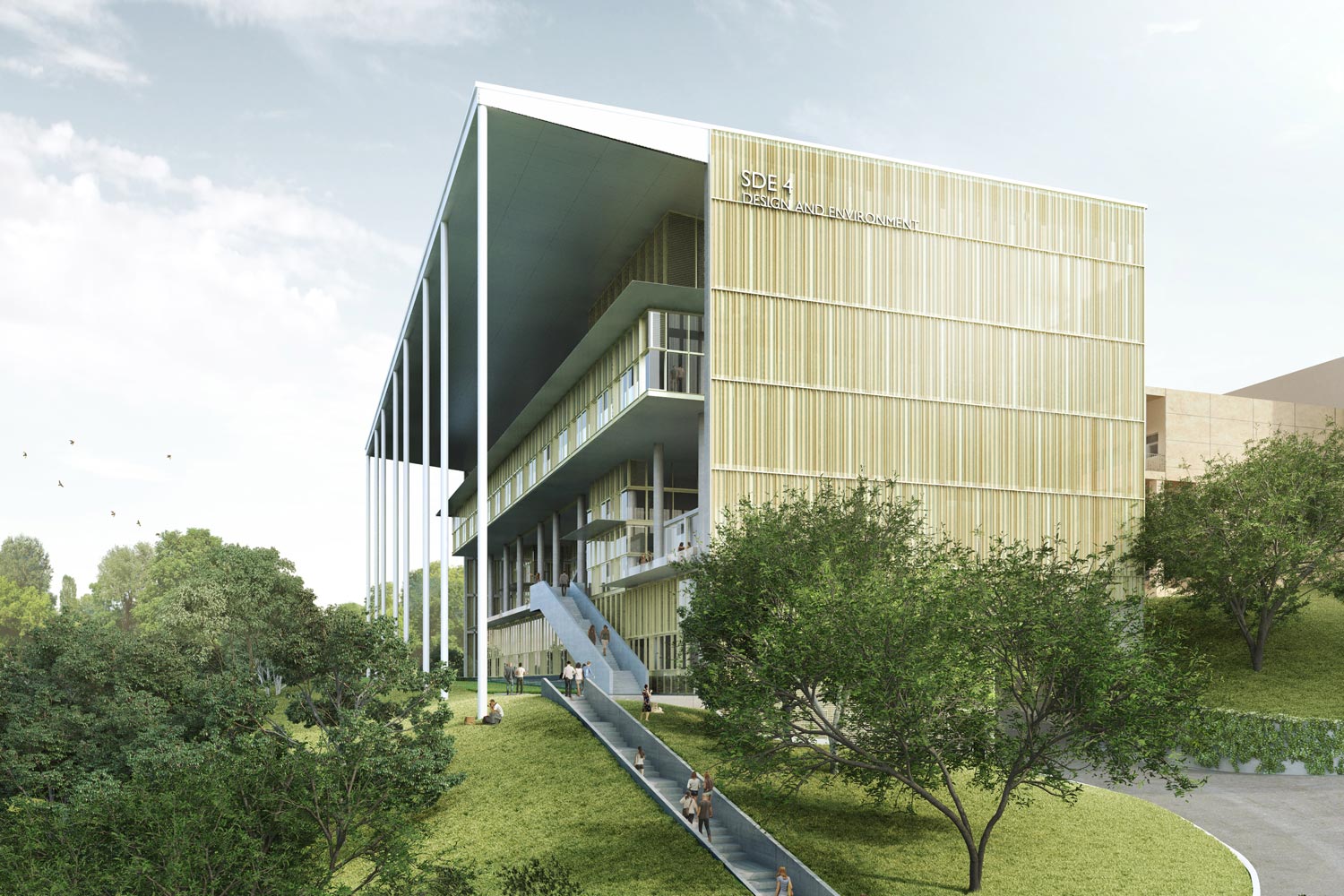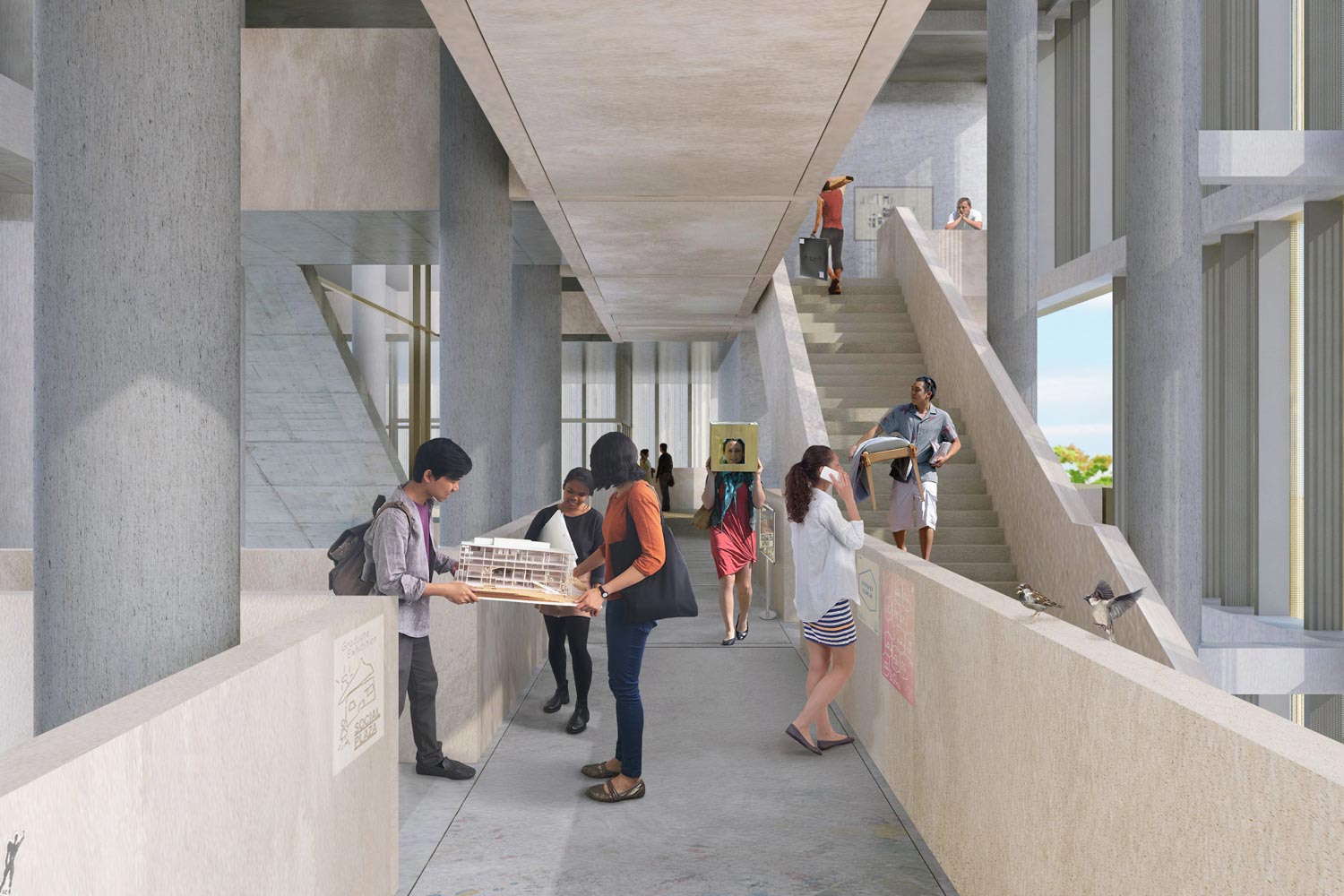National University of Singapore (NUS) School of Design & Environment
Surbana Jurong, Serie Architects and Multiply Architects
The brief called for a building that could accommodate design studios, labs and workshops for School of Design and Environment, which teaches architecture, landscape, interior and product design. Serie Architects, Multiply Architects and Surbana Jurong won the open competition to design the building in 2013. The design concept was based on the loose arrangement of learning spaces with fully operable facades. These spaces were optimised to enable efficient cross ventilation and good exposure to daylight. Protection from the harsh sun was provided by an over-sailing roof, which also serves as an energy harvester through the use of photo-voltaic cells.
As a design school with an emphasis on energy-efficient technologies, this building had to embody the principles it espoused and be an exemplar to the students, faculty and extended design community. The goal of the design was to create a net zero-energy building: a design school that produces as much if not more energy than it consumes. Power will be generated from over 1,200 photo-voltaic cells on the roof. Energy consumption will be reduced by the use of a hybrid cooling system based on partially cooled air and the extensive use of ceiling fans. Combined with a far greater use of natural ventilation, this approach challenges standard, super-AC-cooled sealed-box architecture, and is now a model for all buildings in the tropics.
In addition to environmental aspects, the proposal also re-thinks some of the standard architectural solutions to the educational program. The design uses the potential of sectional connections across programmatic zones and a circulation strategy to set up unexpected meetings across the student body and faculty. The design contains five types of spaces for learning: the large open studio, measuring over 70 metres in length for collaborative learning for architectural students; smaller studios surrounded by landscape for researchers; the ‘drop-down’ crit-space, visible from all approaches to the building, for student presentations; test-bedding areas located along the facade of the building; and social spaces of different sizes that are spread across the building for interaction and relaxation. Construction started early in 2017 and will be complete in 2018.
Renders: Surbana Jurong Consultants/Serie + Multiply




